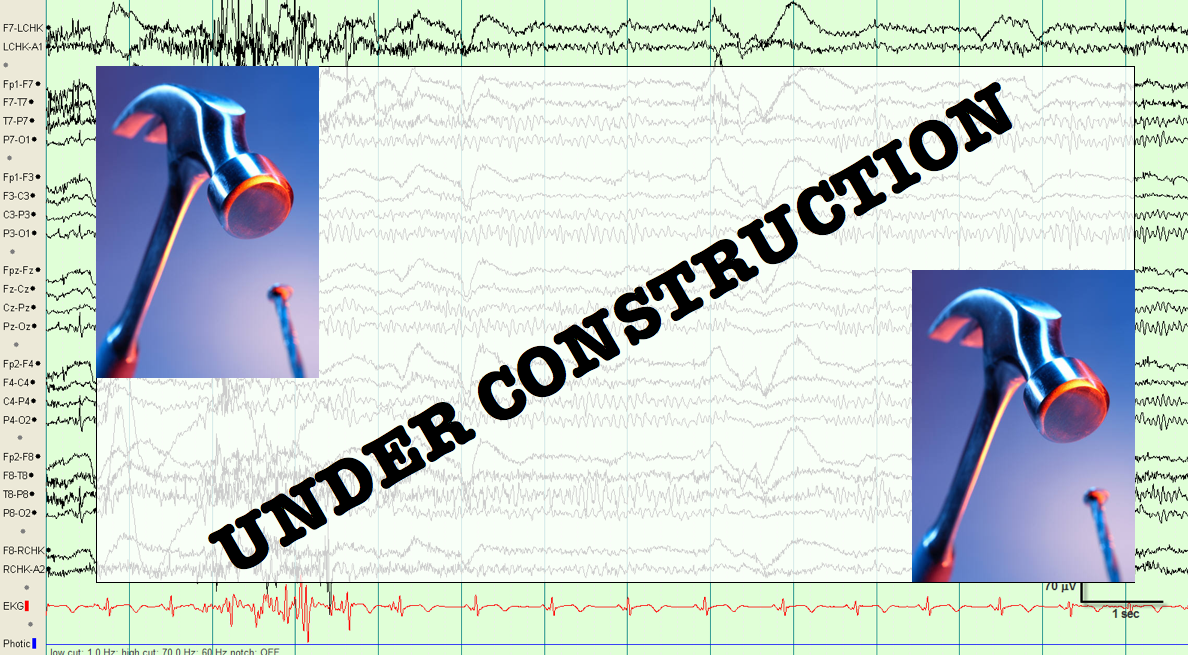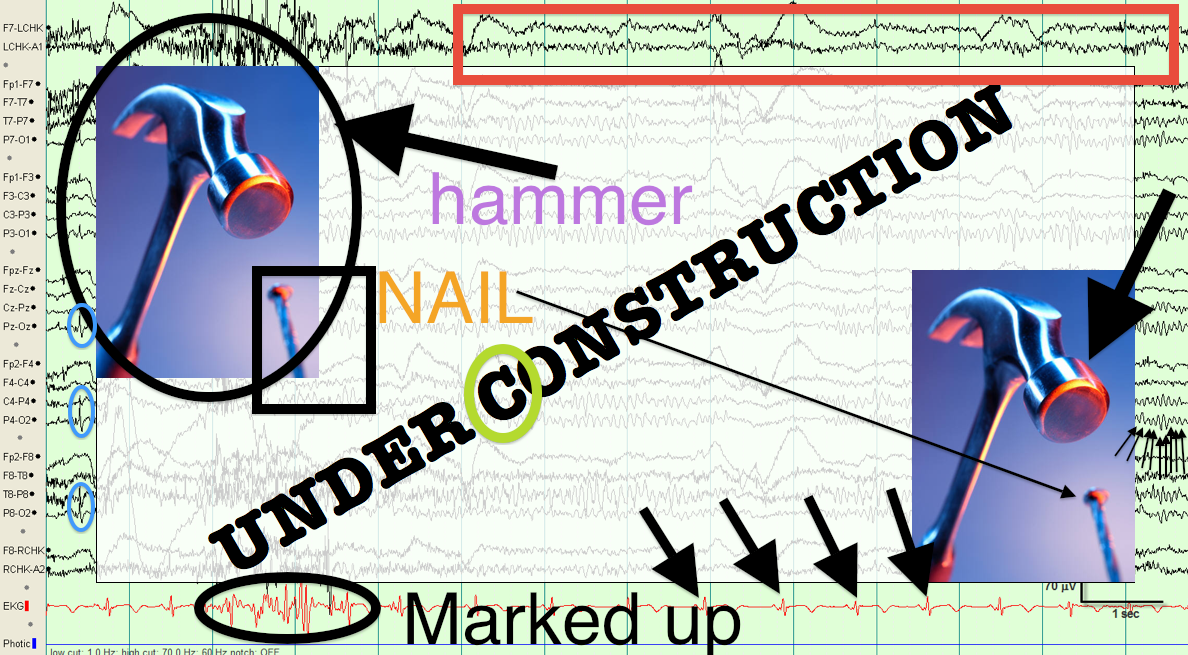Phantom Spike and Wave
Annotations:
Resize image:
Montage: unspecified

appearance
- present in relaxed wakefulness, stage 1 sleep; tend to disappear in deeper sleep, which may be helpful in distinguishing them from epileptiform discharges which tend to persist or become more prominent with deeper levels of sleep)
- diffuse, bisynchronous, relatively symmetric; predominate in anterior and posterior head regions
- small diphasic spike with larger aftergoing slow wave
- 1-2 second bursts
- small diphasic spike, < 30 uV and < 30 msec
- 50-100 uV slow wave

























